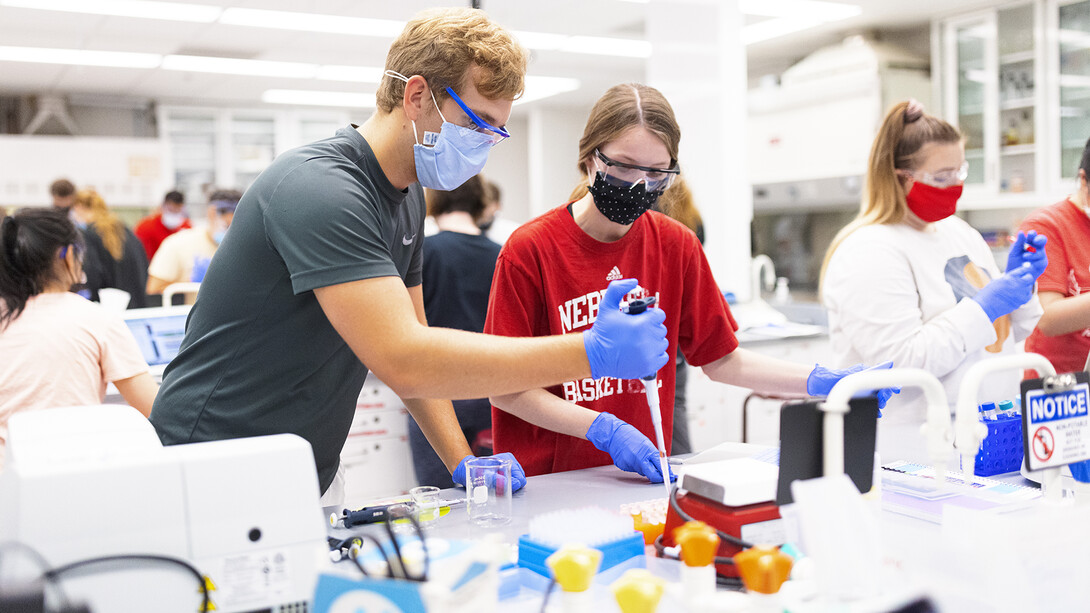
The University of Nebraska–Lincoln’s fall 2021 student census is tracking increases in three strategic populations — first-generation students; first-time, first-year Huskers hailing from the Cornhusker State; and students seeking degrees in engineering, architecture and law programs.
As of Aug. 31, overall student enrollment was 24,431, which represents a decline of 2.7% from 2020. The dip is driven by a 13.5% decrease in international students and through graduation success — including an institution record 3,594 degrees awarded to 3,512 graduates during spring 2021 commencement. Huskers are also earning degrees faster as the university’s six-year graduation rate increased to 69.3%, up from 67.9% — one of the largest increases in what has been a 10-year trend.
Nebraska’s enrollment increases in key areas include:
• First-time freshmen who identify as first-generation students (individuals who are the first in their families to attend college) increased 4.7% to 1,173. Of the 4,736 first-time, first-year students, 24.7% identify as first-gen college students.
• The number of first-year students from inside Nebraska increased to 3,561, up 1.1% from 3,521 in 2020. And, the 4,736 first-time, first-year students for fall 2021 virtually mirror the total of 4,743 in 2020.
• Students seeking careers in engineering, architecture and law fields also saw an overall increase. Professional students seeking law degrees increased 9.4% while undergraduate enrollees grew by 4.5% in the College of Engineering and 6.2% in the College of Architecture (which has grown 32% in the last 10 years).
“While our enrollment may be slightly down overall, one of the driving factors of that is our success in achieving record numbers of graduates. We are excited to see a variety of positive trends that we can build upon as we move forward,” Chancellor Ronnie Green said. “I’m especially pleased that those first-year students — both those who identify as first-generation and those who come from communities across Nebraska — continue to see our university as a place where they can grow and thrive.”
Following enrollment trends nationwide, the university saw an overall decline of 283, or 13.5%, in international student enrollment from one year ago. However, the total first-time international freshmen students grew to 84, an increase of 27.3% over the 2020 census.
Also, graduate programs for international students charted overall growth of 6.8%, to 912. Colleges that contributed to that increase include Agricultural Sciences and Natural Resources; Architecture; Engineering; Fine and Performing Arts; and Journalism and Mass Communications.
University leaders continue to develop new partnerships — including a program that will draw students from Egypt — to counteract the overall decline in international enrollment.
And, in another positive sign that the university’s pursuit of on-time graduation is making an impact, undergraduate students continue to average more credit hours taken each semester. The average for fall 2021 is 13.63 credit hours, up from 13.53 in fall 2012 and 13.57 in fall 2017.
“Our university continues to work tirelessly, overcoming challenges and delivering on our promise that Nebraska is a place where every person and every interaction matters,” Green said. “That commitment helps us to maintain momentum, meet our goals and better serve our diverse and talented students from across Nebraska and around the world.”







